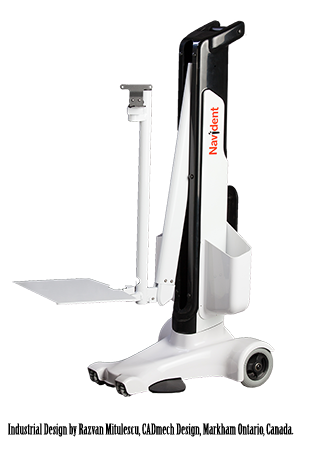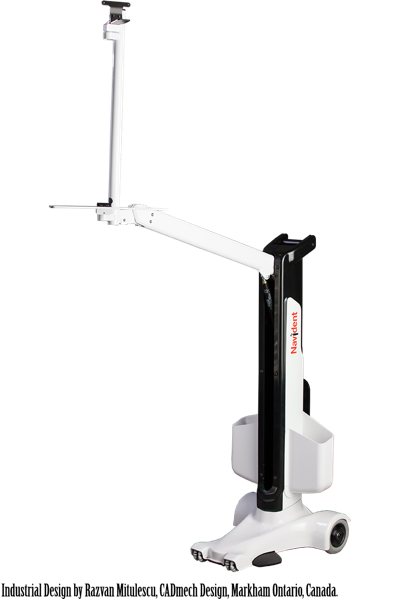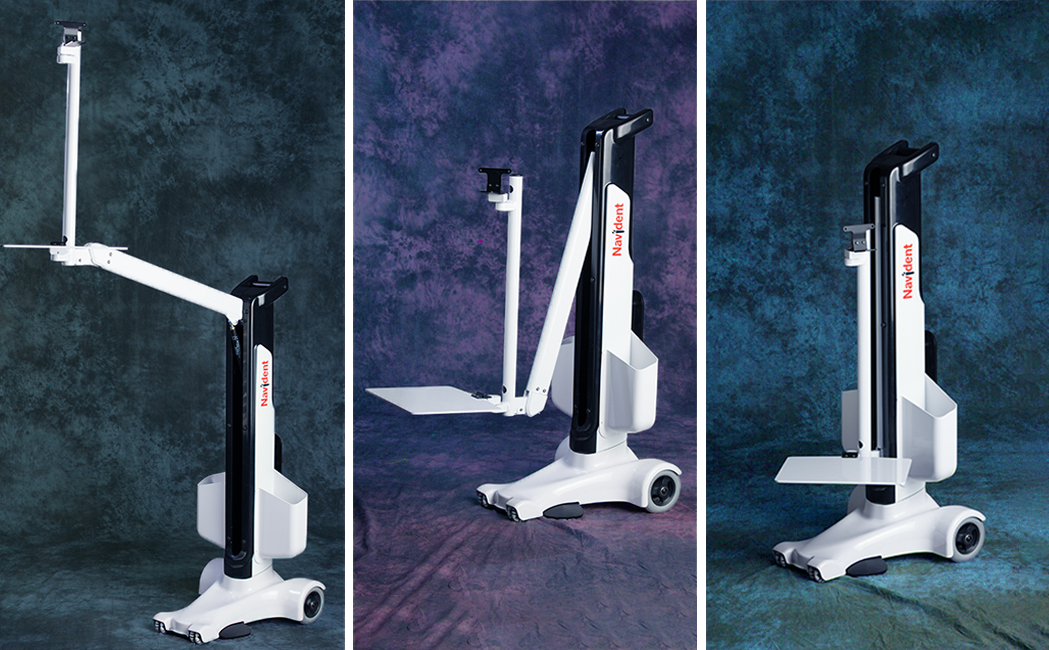Proper ergonomics are becoming more and more prominent for medical cart designs. A well designed medical cart arm offers workstation flexibility as well as multiple other benefits. However, with those great benefits come some design challenges. To help with those challenges, we’re going to share some advice we’ve learned about medical cart arms over the years.
When Are Cart Arms Useful?
- Gives the user a chance to adjust the workstation to fit their ergonomic needs
- Allows the user to move a smaller area into the sterile field without having to move the whole cart
- Helps the user easily see a screen from multiple sides of the cart

How do Cart Arms affect IEC 60601-1 Testing?
- When testing for stability in transport mode (IEC 60601 Clause 9.4.2.1), if you don’t have a mechanical arm lock, sometimes it’s hard to keep a monitor arm in place on bumpy ground. If the arm moves out of place enough to move the cart’s center of gravity to an unstable location that increases the cart’s chances of tipping over during the test. If the arm’s movement is causing this issue, you’ll need an arm locking system that keeps your cart stable as it’s moved from place to place.
- When testing for stability in non-transport mode (IEC 60601 Clause 9.4.2.2), if the arm reaches a far distance from the cart, it often causes tip issues. As a solution, we add warnings on the cart as well as the “information for use” document about the tipping danger of the cart when it is in the non-transport mode configuration.
- If a cart arm is not locked in place, the arm often moves around when you push the cart around on bumpy ground. This is a common occurrence because most customers do not want lockable rigid arms. When you lock an arm in place, it provides a potential risk, because someone might lean on it. This could cause the cart to fail the stability from horizontal and downward force test (IEC 60601 Clause 9.4.2.3). A moving arm deters people from leaning on it.

What are some other design challenges people should consider?
- Things that move add complexity to designs, which will add time to your custom medical cart development timeline.
- With medical cart arms, you have to design with the cart’s center of gravity in mind. If you have a small, lightweight cart, it’s going to be hard to add an arm that feels stable. You need to add weight in the right places to keep the center of gravity in a stable position when you move the arm around.
- When you extend a long arm with a heavy device on one end, it moves the cart’s center of gravity with the arm movement. To combat the change in the center of gravity, you can add weight to the cart’s base.
Why is Cycle Testing Important for Medical Cart Arms?
Moving components always wear out, so eventually you could end up with a squeaking arm. The wear over time could potentially reduce the lifespan of your cart, cause the arm to go out of adjustment, or require maintenance.
HUI Manufacturing puts all cart arms through cycle testing. The team creates a custom fixture to test that arm’s specific application. They run the tests to give our customers an expected average lifecycle for the arm. If a few carts are going to be used heavily, surpassing the average lifecycle, we’ll set up a system to provide replacement parts for those few carts.
That wraps up the advice we’ve learned about medical cart arms over the years. Arms are a very complex feature on medical carts, so we hope this advice will help you make informed decisions going forward. At HUI Manufacturing, we love solving your complex design challenges, so if you need help with your custom medical cart, please contact us today!


